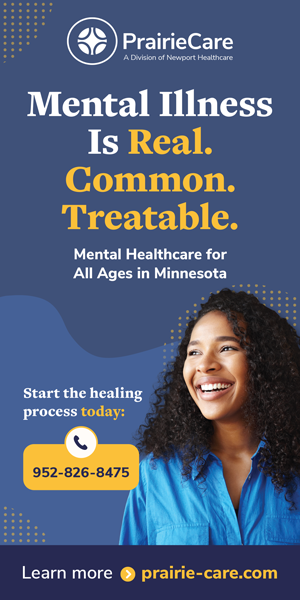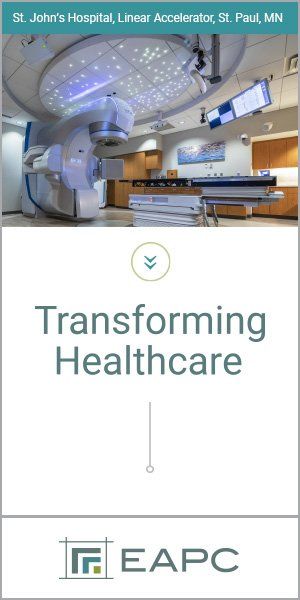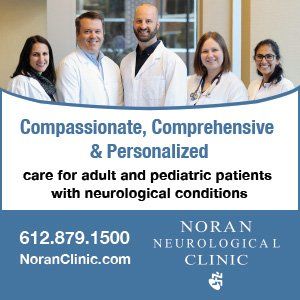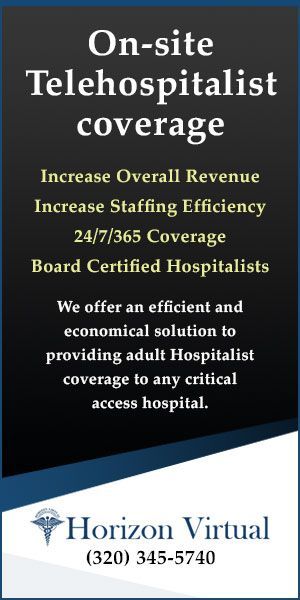dult degenerative scoliosis (ADS), is a degenerative spinal condition characterized by a lateral curvature of the spine greater than 10 degrees in the coronal plane with an associated rotational deformity. It is increasingly recognized as a significant source of back and leg pain, spinal imbalance and functional decline in older adults. With an aging population and improvements in diagnostic capabilities, clinicians across specialties will encounter this condition more frequently. This article offers a comprehensive overview of ADS, including its recognition, underlying causes, current management strategies and essential referral guidelines.
Cover Two
Adult Degenerative Scoliosis
Contemporary management and key considerations
BY Mostafa El Dafrawy, MD
How Common Is ADS?
ADS is more prevalent than many clinicians realize. Epidemiologic studies estimate that up to 68% of adults over age 60 exhibit radiographic evidence of scoliosis, though not all are symptomatic. Symptomatic degenerative scoliosis occurs in approximately 6% of adults over 50. The condition is more common in women and in those with a history of osteoporosis or lumbar spondylosis and arthritis.
Recognition and Epidemiology
ADS typically manifests after the age of 50, arising from asymmetric degeneration of the intervertebral discs and facet joints, often compounded by pre-existing mild scoliosis or spinal asymmetry. Unlike idiopathic scoliosis, which develops during adolescence, de novo ADS results from the wear-and-tear processes of aging and degeneration.
Clinically, patients may present with a combination of back pain, neurogenic claudication-type symptoms with difficulty standing and walking and/or radiculopathy with sciatica-like symptoms. The use of health-related quality of life scores (HRQoLs) and patient-reported outcome measures (PROs) has not only advanced our understanding of the substantial burden of ASD but also demonstrates correlation between disability, pain and severity of the scoliosis. Multiple studies in the U.S. and other countries compared HRQL measures to other chronic conditions. Findings showed that ADS patients had lower scores across all domains, and even more disability compared to other chronic conditions such as CAD, DM and COPD. Physical exams produced many examples of these disabilities including:
- Visible or palpable lateral curvature of the lumbar spine, paraspinal prominence becoming more apparent with forward flexion.
- Coronal plane decompensation, e.g., trunk shift to one side, tilt to the side.
- Positive sagittal imbalance, e.g., forward stooped posture.
- Asymmetric shoulder or pelvic heights, waist crease asymmetry.
- Lower ribs impinging on the iliac crest bone in advanced cases.
- Limited lumbar range of motion.
- Leg pain bilateral or unilateral with standing and walking, leg pain reproduced by standing and extension posture.
- Tingling and numbness in the lower extremities and weakness of the muscles of the legs, e.g., foot drop.
Adult degenerative scoliosis is a prevalent and often under-recognized condition.
Imaging with radiographs is crucial for diagnosis and is usually the first diagnostic test. A standing full-length scoliosis radiograph, ideally including the entire spine with the pelvis, can delineate the Cobb angle, coronal/sagittal alignment and imbalance, and levels of spinal degenerative changes. MRI may be indicated to assess neural compressive pathology with neurogenic claudication or radiculopathy-type symptoms or muscle weakness.
Variable ADS Occurrence
We all develop wear and tear of the lumbar motion segments as we age. While the natural aging process contributes to disc degeneration, not everyone develops scoliosis. ADS is a multifactorial condition and results from a combination of biomechanical, genetic and systemic factors.
Biomechanical studies have shown that asymmetric loading or previous minor spinal deformities can lead to uneven disc degeneration. This asymmetric disc wear can initiate a vicious cycle of a degenerative cascade with more loss of disc height causing increased loads on the facet joints and facet arthritis. This leads to increased loads on the anterior part of the vertebral body causing further asymmetric disc loading, increased muscle activity and more compression on the spine. This asymmetric wear eventually causes the structural changes leading to a coronal plane curvature and rotational instability of the lumbar spine.
Genetic considerations may cause some individuals to inherit structural predispositions such as facet tropism or lumbar lordosis variations. There may be a family history of adolescent scoliosis that progresses into adulthood or a family history predisposing to de novo degenerative lumbar scoliosis.
Systemic factors may involve bone quality. Osteoporosis and bone mineral density irregularities may accelerate the development of a spinal deformity. Screening for osteoporosis in patients with risk factors with Dexa scans is still the gold standard. Patients with diagnosed osteoporosis in the setting of a large degenerative scoliosis deformity should be treated with osteoporosis medication to minimize risk of curve progression and development of vertebral compression fractures.
Degenerative Scoliosis Etiology
As the study and understanding of ADS advances, new indicators become more clear. What follows are three examples of this you may not know.
Sagittal, Not Just Coronal, Alignment Drives Whereas scoliosis is defined as a spinal deormity (>10 degrees) in the coronal plane, the sagittal imbalance (e.g., loss of lumbar lordosis or increased pelvic tilt) is a stronger predictor of pain and disability.
Historically, assessment of scoliosis focused on the coronal plane, but today we recognize the importance of the sagittal plane as the main driver of disability. Sagittal plane alignment is measured by the SVA (Sagittal Vertical Axis), which is a vertical line from C7 down; normal SVA should intersect the sacrum. Sagittal plane alignment has been recognized only in the past 15 years as the main driver of outcomes and health-related quality of life in adult spinal deformity. Sagittal plane imbalance, i.e., forward stooped posture, can significantly affect the quality of life and ambulation and is often the driver of significant disability and the reason patients might decide on major reconstructive surgery.
Patients May Present Without Obvious Deformity Some patients with severe degenerative changes and disabling symptoms may not exhibit classic scoliosis on physical exam. Only standing imaging can reveal the structural deformity and misalignment contributing to their symptoms. Our bodies have an innate ability to compensate, our brain’s “internal gyroscope” is always trying to balance the head over the pelvis to minimize muscle energy needed for an upright posture.
We perform most ADLs (activities of daily living) in an imaginary cone-like space around the body called the “cone of economy.” This concept was first described in the early 1970’s by by Jean Debousset, a visionary of spinal alignment. He described a cone-shaped region extending from the feet upward around the trunk. Within this cone the body functions to perform most activities of daily life. Alignment within this cone is favorable in terms of energy expenditure, whereas alignment outside the cone of economy will lead to increased energy expenditure on muscle work to maintain a balanced posture. Adult scoliosis can cause spinal malalignment outside this favorable cone of economy; thus the back muscles work harder to balance the body; as a result, these muscles can fatigue earlier and cause back pain.
Nonoperative management should always be first-line treatment modality.
Nonoperative Management A significant proportion of patients can achieve meaningful improvement through a comprehensive nonoperative regimen, delaying or even avoiding surgery. Nonoperative management should always be first-line treatment modality. These include physical therapy, stretching and aerobic exercise. Other nonoperative interventions and topical agents such as heat and tens units can also be effective in managing pain and maintaining function.
Core strengthening exercises are safe for patients with ADS, including supervised weightlifting, cycling and aquatic therapy. Cognitive behavioral therapy, biofeedback and acupuncture could also be considered. Non-narcotic pharmacotherapy as needed is helpful in controlling symptoms, and can include non-steroidal anti-inflammatory drugs or gabapentin/pregabalin agents. Epidural steroid injections, trigger-point injections and nerve root blocks can provide an extended period of pain relief.
Initial Workup and Management in Primary Care
When a patient presents with signs suggestive of ADS — chronic back pain, posture changes or neurogenic leg symptoms — a thoughtful workup should include:
- Standing scoliosis x-rays or upright lumbar spine x-rays.
- Lumbar spine MRI (if neurologic symptoms or other red flags are present).
- Assessment of bone density: Dexa scan with risk factors for osteoporosis.
- Review of functional limitations and pain severity, restrict activities involving bending with heavy lifting as they can aggravate any flare-up symptoms.
If ADS is indicated, first-line treatment strategies include physical therapy focused on core strengthening, flexibility and postural retraining. NSAIDs and acetaminophen will typically address pain, with a Medrol pack used for severe flares of pain. Consider muscle relaxants or short-term opioids cautiously. Neuropathic pain agents such as gabapentin or duloxetine may help with radicular symptoms and tingling numbness, i.e., sensory changes that are bothersome. Epidural steroid injections or facet joint blocks can be used for targeted relief, although long-term benefits are variable. Sometimes, in select cases, bracing is used for short-term support, especially in frail patients with sagittal imbalance.
When to Refer to a Spine Specialist
Referral to spine surgery, from either an orthopedic surgeon or a neurosurgeon is appropriate when:
- Nonoperative treatments have failed over three months.
- There is progressive neurologic deficit or intolerable radicular pain.
- The patient has significant sagittal or coronal imbalance (>10-20 degrees).
- Imaging reveals central canal stenosis or foraminal narrowing with nerve root compression.
Early referrals may also be warranted in patients with severe functional decline, intractable symptoms or complex medical needs where multidisciplinary planning is essential.
What Will the Spine Specialist Do?
Spine specialists will confirm the diagnosis with advanced imaging, assess the severity and flexibility of deformity and evaluate the patient’s surgical candidacy based on comorbidities and functional status. At this point there are many treatment options.
First is continued conservative management, especially in patients unfit for surgery or those with mild to moderate symptoms. For patients with dominant leg pain, minimal deformity and no concern for spinal instability, surgical decompression alone may be effective. When deformity is rigid or progressive, decompression with fusion helps correct alignment and prevent further progression of scoliosis. Finally, reconstructive or complex realignment surgery may be necessary. This involves osteotomies and long-segment instrumentation and is reserved for patients with severe coronal or sagittal imbalance and functional debilitation.
Modern Surgical Trends and Advances
Historically, surgical intervention for adult scoliosis was often avoided due to high complication rates, long recovery times and limited functional gains. However, advances in imaging, intraoperative navigation and minimally invasive techniques have transformed management. Patients who were indicated for long open surgeries with extensive blood loss, prolonged hospitalization and high risk can now be approached with minimally invasive techniques, robotic-assisted instrumentation and enhanced recovery protocols, reducing morbidity and improving outcomes.
Moreover, our understanding of spinal biomechanics and the development of different radiographic measurements such as spinopelvic parameters like pelvic tilt, sacral slope and lumbar lordosis are now central to preoperative planning. This data-driven approach allows for more precise, patient-specific correction rather than generic fusion strategies.
Another key change is in appropriate patient selection and multidisciplinary assessment, including frailty indices, bone health optimization and patient-reported outcomes, which have become standard in many centers to guide surgical planning.
Conclusion
Adult degenerative scoliosis is a prevalent and often under-recognized condition that can significantly impact quality of life. Recognition of its clinical signs, appropriate imaging and understanding the multifactorial nature of its development are crucial for early diagnosis. Most patients benefit from conservative management, and only a subset will require surgical correction.
Spine specialists today employ a nuanced approach to treatment, incorporating advances in technology, alignment-focused planning and tailored surgical techniques. As a primary care physician or generalist, one must understand when to refer and what modern care entails to ensure timely and effective intervention for this growing patient population. Recognizing and managing ADS appropriately can make a profound difference in maintaining mobility, independence and quality of life in older adults.
Mostafa El Dafrawy, MD, is an orthopedic surgeon at Twin Cities Spine. He is a member of the Scoliosis Research Society and the Lumbar Spine Research Society.
MORE STORIES IN THIS ISSUE
cover story one
Weaponizing Language: Finding a better way
By David Hamlar, MD, DDS
cover story two
Adult Degenerative Scoliosis: Contemporary management and key considerations






































